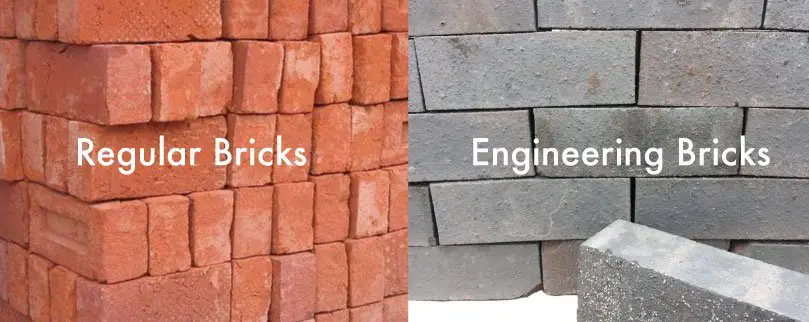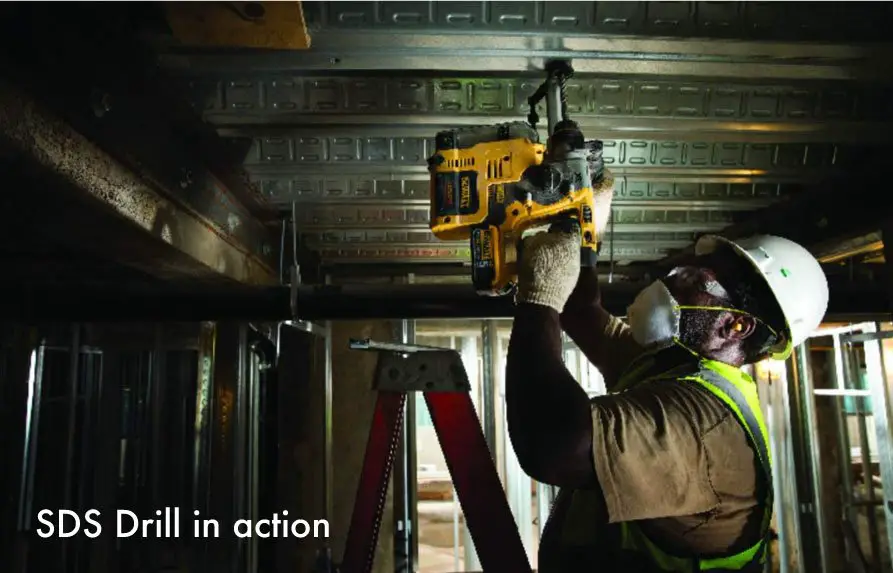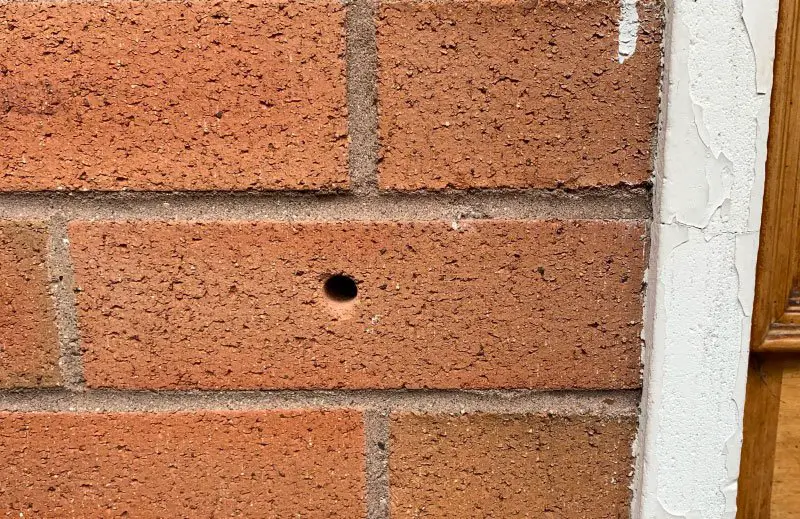Drilling into hard objects like bricks can be a complicated and time taking process. Most people struggle with finding the right way of doing it. I was caught in a similar situation, so I decided to research and write about the correct way of drilling into Accrington or Engineering brick.
So, how do you exactly drill into Accrington or Engineering bricks? The answer is simple. The best way of doing it is by using an SDS (Slotted Drive System) Rotatory Hammer Drill paired with a sharp and good quality drill bit (SDS Masonry Drill bits). You can, however, use regular Hammer drills, but it will be a much slower process.
Simply put, this can be a frustrating and complicated task if you don’t have prior knowledge of it, but you can easily do it through proper guidance. I’ll talk briefly about the correct way of efficiently doing this task with step by step process.
Difference between drilling into Accrington or Engineering brick and Regular brick

Standard bricks are easy to drill and get easier as they get older.
Engineering bricks are a devil to drill and destroy bits at a scary rate. Engineering bricks, while very strong, are also brittle, so they can shatter or explode when used with an impact drill.
Basically, the harder the brick and the larger the hole, the more grunt you need in a drill.
Type of Drill needed and Why?
It mostly depends on the type and state of the brick. For standard bricks, a simple battery power general purpose drill will do the job for small holes up to about say 8mm, but for engineering bricks, the same drill will be struggling a lot, and no matter what drill you use, the bits won’t last very long at all.
For larger holes or harder bricks, you need a more powerful drill, and the best choice is to go with an SDS Rotatory Hammer Drill. An SDS drill has lower RPM and has higher impact energy. They come with SDS chucks, so you need SDS bits to fit them. Higher impact energy may well shatter engineering bricks, so use the hammer with care.
A good big SDS will go up to about 30mm, then up to 100mm with a core bit. Above about 100mm, you need a dedicated core drill for massive holes, and that’s only in standard bricks. If you need anything that big in engineering bricks, you will have to contact a specialist drilling company.

Tools required to drill into Accrington Brick
You will need the following items to drill into this type of engineering brick.
- A good quality SDS Rotatory Hammer Drill
- SDS Masonry Drill Bits
- Wall plugs or screws (if there’s any)
- Tape to mark the depth of the hole on the drill bit.
- A face mask and safety glasses (for protection from dust)
- Condensed air (to blow the dust out of the hole).
Step by Step Process for drilling into Engineering Brick:
- The first and foremost thing you need to do is wear your protective gear as this process will generate a lot of dust that could potentially damage your eyes, and the dust could go inside you.
- Mark the drilling point on the Accrington or Engineering brick.
- Set the masonry drill bit on your hammer drill and make sure it’s tightly locked into the drill.
- Make sure that the hammer mode is switched on in your drill.
- If you have any wall plugs, make sure that you are using the same size drill bits.
- Now mark the wall plug’s length or mark the point at which you want your hole depth to be on the drill bit using tape.
- You are now ready to start drilling in the brick.
- Carefully start pushing the drill into the brick. Start drilling at a slow speed before speeding it up. Carry on with this steady process until the point marked on the drill bit.
- Once you’re done drilling, blow the dust out of the hole using condensed air.
- Insert the wall plug (if you need one) and using regular drilling mode to tighten the screw in it.

Sometimes, the hole drilled by you can be a bit larger than you intended it to be. In this situation, all you need to do is get wooden bits and cut small pieces. Fill it in the gap between the wall plug and the wall, and then hammer it down to fill it in position. The wall plug will now fit the hole perfectly.
Things to be extra careful about while drilling:
I have made a step by step guide for drilling, but there should be some extra precautions that one should be careful about while drilling into bricks:
- Ensure that your drill is perpendicular to the wall so that you have a perfect angle to drill straight into the brick.
- Make sure to drill straight into the brick and not wiggle the drill on its way out; this could result in a bigger hole.
- It is recommended to take small pauses between the drilling so that the bits and the drill don’t get overheated. It’s better to drill a bit, stop, let it cool down, drill a bit more and repeat this process.
Difference between Rotary Hammer Drill and Normal Hammer Drill
A normal hammer drill hammering feature is generated with gears’ help, and the impact is quite less. When the main shaft of the drill rotates, energy gets stored in the spring and, with an impact, reaches the main drill. You have the option of turning off the hammering feature.
On the other hand, a rotary hammer drill is built for a hammering feature with a proper piston type. This mechanism is quite efficient and delivers a lot higher impact force. There is no option for turning off the hammering feature in most of the drills. You can also drive the drill in a chiseling mode to break down concrete or brick wall.
Recommended Tools
You will need to get a good-quality cordless SDS drill for this task. You can also rent one from a rental company as this will be an expensive investment.
I have made a list of different drills, and you can choose one according to your need and budget. You can find the SDS Rotary Hammer drill in the list.
Also note that, don’t select a budget drill for this task and select one with a hammering feature.
Related Questions
What drill bit do I need to drill into brick?
In this particular process, we recommend using an SDS Rotatory hammer drill so that you will need SDS Masonry Drill bits. Please do not use a multi-purpose drill bit or a wood/metal drill bit, as they might break easily while drilling into bricks.
How long does a masonry drill bit last?
It depends on the quality of the drill bit and its usage. If you use it on heavy objects like brick or concrete and the usage is daily, on average, it lasts about two to three weeks.
How does an Accrington brick look like?
Accrington brick is a blue-y reddish brick that’s very hard. It is a type of engineering brick and produced in Altham near Accrington, Lancashire, England. They are used in the foundations of the Empire State Building.
